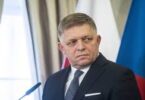Monitoring Desk
MOSCOW: Violations of the state border, photographing thousands of square kilometers of territory and secret military facilities – exactly 65 years ago, on July 3, 1956, US President Dwight D. Eisenhower approved U-2 flights over the Soviet Union. High-altitude spies felt with impunity until the plane of Francis Powers was shot down near Sverdlovsk. Today, history repeats itself – after the return of Crimea to Russia, NATO naval and air reconnaissance officers are continuously increasing their activity near the country’s borders.
Twenty four spans
In the 1950s, Washington spared no effort and resources to ferret out the military secrets of Moscow, especially in the field of nuclear development, learn about the testing of new types of weapons at numerous test sites, and determine the location of strategically important facilities.
The matter was complicated by the fact that much was far in the depths of the vast Soviet territory. The Americans needed a plane out of reach for air defense. Such a car appeared in 1955.
The high-altitude subsonic U-2 weighing only ten tons did not carry strike weapons and was equipped only with reconnaissance equipment. The cruising speed is about 750 kilometers per hour, the range is 4.5 thousand kilometers. But the most important thing: U-2 could rise to a height of over 21 thousand meters. Here, neither the fighters, nor the missiles available at that time in the Soviet army could reach him.
The Pentagon has formed a special secret Air Force unit – Detachment 10-10. It was supervised by the Central Intelligence Agency. The main part of the group was stationed at the Turkish Incirlik airbase. The scouts could take off from here unnoticed by the radar stations, with enough fuel for a non-stop flight.
U-2 flew with impunity over the largest cities – Kiev, Leningrad, Minsk, Moscow. They photographed industrial enterprises, shipyards, defense plants, air defense facilities, strategic aviation airfields, bases of ships and submarines. Over the course of four years, the USSR air defense radio equipment detected 24 espionage flights.
The first and last U-2s were intercepted in May 1960. Francis Powers entered the country’s airspace in the Tajik SSR and reached the Urals. On alarm, several fighters were raised, but none was able to climb the reconnaissance echelon. The plane eventually caught up with the S-75 missile, when Powers dropped slightly in the Sverdlovsk region. The pilot was detained, sentenced to ten years in prison, and soon exchanged for a Soviet intelligence officer, Rudolf Abel, who was arrested in the United States.
Big Brother
The incident caused a lot of political resonance. Nikita Khrushchev accused the Americans of treachery and demanded an apology from Eisenhower. He expressed his sincere regret. Relations between the countries deteriorated, and the planned visit of the American president to Moscow did not take place.
The U-2 program was canceled. Soviet air defense was rapidly improving, new interception systems appeared. High-altitude scouts lost their invulnerability, and the Americans switched to satellites.
In 1956, the CIA and the US Air Force developed a program for tracking ground targets of the USSR and China – Corona. In the 1960s, the Americans launched more than 140 reconnaissance vehicles with long-focus wide-angle cameras into orbit. The film was delivered from space by special capsules.
The satellites flew at an altitude of about a thousand kilometers. The cameras distinguished objects several meters in size, later tens of centimeters. It is noteworthy that the first satellite obtained as much intelligence information as all the U-2 planes put together – one capsule contained images of more than 2.5 million square kilometers of the territory of the USSR.
Since the mid-1990s, only heavy Orion electronic reconnaissance vehicles have been sent into orbit. Eight such satellites are currently operating in space, the details of their mission are strictly classified. All in all, the US National Space Intelligence Agency has about 50 active spy vehicles – a third of the military orbital group.
“Orions” and “Poseidons”
It must be said that they did not abandon reconnaissance aircraft in the United States and, accordingly, in NATO. Although aircraft are no longer used on the same scale as before, they account for a significant part of the data collected on the Russian defense system.
So, for example, the most frequent guests off the coast of Crimea are the P-3 Orion patrolmen, which were put into service back in the 1960s. Then their main tasks were the search and detection of submarines, mining of the water area, the issuance of over-the-horizon target designation and the coordination of search and rescue operations. Over time, the Orions were adapted for reconnaissance.
On board there are powerful radar equipment, electronic warfare equipment, a hydroacoustic complex, and a system for processing incoming information. The scouts can carry bombs and missiles: anti-ship “Harpoons”, guided and unguided air-to-surface missiles, depth charges, including nuclear ones.
More modern P-8 Poseidons are also equipped with reconnaissance and search equipment, and in the inner compartment there are free-fall bombs and Mark 54 torpedoes. On the outer pylons, Sidewinder air-to-air missiles and the same Harpoons can be suspended.
In addition, strategic spy planes – RC-135 – capable of spending long hours in the sky and flying more than nine thousand kilometers without refueling, have been noticed more than once near the borders of Russia. During the Cold War, they tracked the launches of Soviet intercontinental missiles, but now they mostly probe the operating frequencies of Russian air defense systems.
Sea hunters
The Pentagon and the CIA are also actively developing a system of espionage from the sea. The US Navy intelligence is one of the oldest, it was created back in the 1880s.
At the beginning of the Cold War, the Americans, along with warships, widely used fishing trawlers with radar equipment, and by the 1960s they were already building specialized reconnaissance vessels based on civilian transport workers.
They operated across the entire world ocean – from the coast of South America to the coast of the Far East. They collected information about various military facilities, determined the coordinates and parameters of the movement of potential targets for an attack, noted the places and times of nuclear tests, and intercepted radio communications between the Soviet military and their allies.
The history of sea spies knows many incidents. So, in June 1967, during the Six Day War, the Liberty ship, conducting electronic reconnaissance in the Mediterranean Sea off the coast of the Sinai Peninsula, mistakenly attacked Israeli fighters. 34 crew members were killed, 173 were injured.
In January 1968, the reconnaissance ship Pueblo, which violated the DPRK border, was captured by the North Korean military. During the arrest, one American sailor was killed and nine were injured. The crew – 82 people – were arrested and sent to a POW camp.
Now the Americans conduct reconnaissance mainly with regular warships. Destroyers and cruisers regularly appear near the territorial waters of Russia, and they are especially interested in the Crimea.
Since 2014, the Black Sea region has been a zone of special attention for military intelligence services of NATO countries. And, as recent events show, this unhealthy interest will not fade away soon.






